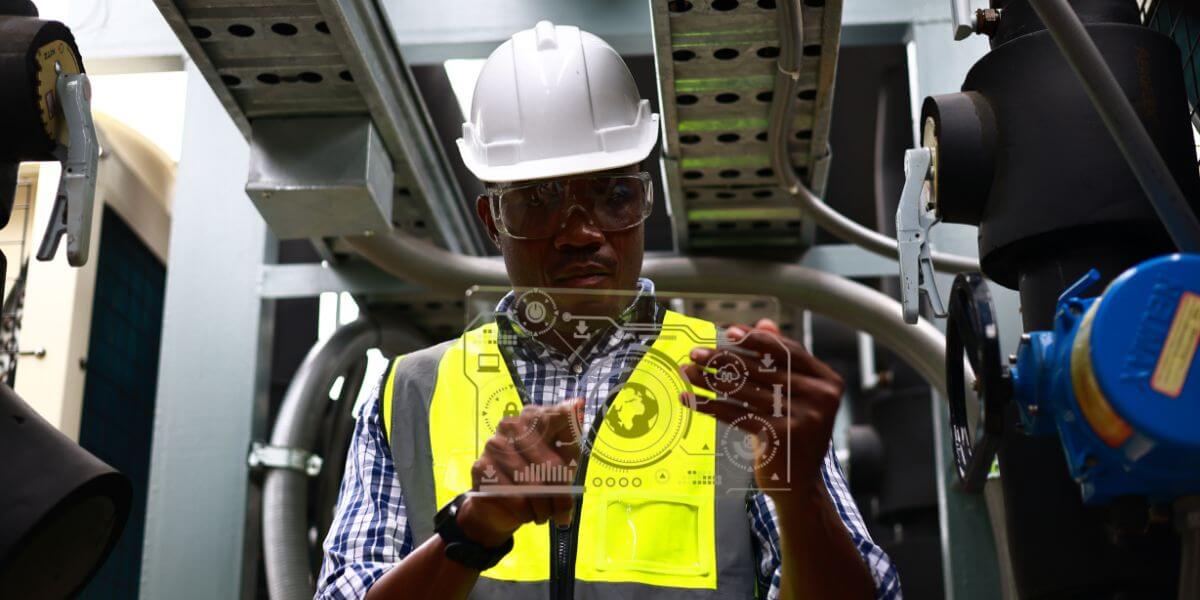Construction workers face some of the highest rates of workplace injuries and fatalities, making safety a critical concern for contractors, site managers, and business owners. Relying on outdated paper checklists and manual reporting slows safety processes and increases the risk of oversight. Digital safety management software like Salus or Raken helps construction teams stay compliant, reduce incidents, and create a safer work environment for everyone on-site.
Quick look
- Construction safety software digitizes safety management processes, reducing paperwork and human error.
- Features include hazard identification, checklist creation, incident reporting, and performance monitoring.
- The right software improves compliance, reduces liability, and enhances worker safety.
- Consider customization, ease of use, and integration when selecting a platform.
- Leading solutions include Autodesk Construction Cloud, Salus, eMod, and Raken.
What is construction safety management software?
Construction safety management software is a digital solution that helps contractors, site managers, and crews stay on top of safety protocols. Instead of relying on paper forms and spreadsheets, these platforms centralize safety documentation, reporting, and compliance tracking in one place. They allow teams to submit incident reports, conduct inspections, and monitor job site conditions in real-time, reducing delays and improving accuracy. By centralizing documentation and giving access to every worker, companies can minimize human error, improve regulatory compliance, and create a safer, more efficient work environment.
Why safety software should be an integral part of your business
Relying on outdated safety management methods can lead to missed hazards, compliance issues, and increased worker risk. Construction safety software simplifies the process by making safety procedures more accessible, accurate, and proactive. Here is how:
Create and distribute checklists and incident reports
Keeping track of safety protocols is critical, but paper-based forms can get lost, damaged, or overlooked. Safety management software allows companies to create, customize, and distribute digital checklists for inspections, audits, and routine safety tasks. Workers can complete these checklists on mobile devices in real-time, ensuring that every safety measure is documented properly. If an incident occurs, reports can be generated instantly, providing detailed records that help businesses track trends, address risks, and stay compliant with industry regulations.
Identifying hazards and preventing risk
Construction sites are unpredictable, with new hazards emerging daily. Safety software makes it easier for teams to identify and report risks before they become serious incidents. With real-time hazard identification and risk assessment tools, workers can report safety concerns instantly from the field using mobile devices. Site managers can then review reports, take corrective action, and implement preventive measures without delays.
By streamlining this process, companies create a proactive safety culture where risks are addressed before they cause accidents. This protects workers and reduces project delays, liability issues, and costly fines for non-compliance.
Monitor safety performance
Tracking safety performance is just as important as implementing safety protocols. Construction safety software provides real-time insights into key safety metrics, helping companies identify trends and make data-driven decisions. Instead of sifting through stacks of paperwork, site managers can access reports on incident rates, near misses, and overall compliance progress from a centralized dashboard.
With this data, businesses can pinpoint recurring hazards, evaluate the effectiveness of safety initiatives, and adjust their strategies to improve job site conditions. By continuously monitoring safety performance, companies can reduce risks, increase accountability, and foster a culture where safety is always a priority.
Enhancing regulatory compliance
Navigating construction safety regulations can be overwhelming, especially with evolving standards from organizations like OSHA, the CSA, and local governing bodies. Safety management software simplifies compliance by ensuring that safety protocols, inspections, and incident reports are documented and easily accessible. Instead of scrambling to gather paperwork during an audit, businesses can generate detailed reports with just a few clicks. By keeping everything organized and up to date, construction teams can focus on maintaining a safe work environment while confidently meeting industry standards.
Encouraging a strong safety culture
A strong safety culture starts with giving workers the right tools to report hazards, document incidents, and communicate concerns without delay. When safety becomes a shared responsibility, accountability increases across all levels of the organization. Construction safety software empowers employees by making safety reporting simple, accessible, and transparent. With mobile-friendly apps, workers can submit observations, complete safety checklists, and notify managers of potential risks in real-time—no paperwork required.
How to choose the right safety management software for your company

Not all safety management software is created equal, and the right choice depends on your company’s unique needs. Whether managing a small team or overseeing multiple job sites, selecting the right platform can make a big difference in efficiency and compliance. Here’s what to consider when making your decision:
Determine your needs
Before comparing software options, start by identifying your biggest safety challenges. Are you struggling with compliance tracking? Do you need a better way to report incidents in real-time? Understanding your pain points will help you prioritize the features that matter most.
Create a list of must-have features, such as digital checklists, real-time reporting, and compliance tracking, versus nice-to-have extras, like advanced analytics or AI-driven safety monitoring. This will ensure you invest in a solution that addresses your company’s safety goals without paying for unnecessary add-ons.
Consider flexibility and customization
Every construction company operates differently, so your safety software should adapt to your workflow—not the other way around. A flexible platform allows you to tailor features to fit your job site requirements, ensuring that safety protocols align with your team’s daily operations.
Look for software that offers customizable checklists, reports, and dashboards so you can track the data that matters most to your projects. Whether you need site-specific safety inspections, automated compliance reminders, or personalized reporting templates, having the ability to adjust the software to your needs will make it more effective and easier for your team to adopt.
Make sure it’s user-friendly
Even the best safety software won’t be effective if it’s too complicated for your team. A simple, intuitive design is key to ensuring quick adoption across all levels of your workforce, from site supervisors to field workers.
Look for a platform that prioritizes ease of use, with clear navigation, straightforward reporting tools, and minimal training requirements. Mobile-friendly access is also a must—workers should be able to complete checklists, report incidents, and access safety documents from their smartphones or tablets while on-site. The easier it is for employees to engage with the software, the more likely they will use it consistently, improving safety compliance and efficiency.
Has the ability to integrate with existing tools
Construction projects rely on multiple software platforms, from project management to compliance tracking. Your safety management software should integrate with your team’s tools, eliminating the need for manual data entry and reducing the risk of errors. When safety software is in sync with your other systems, it streamlines workflows, improves communication, and makes it easier to maintain compliance without disrupting daily operations.
Offers scalability
As your construction business grows, so do your safety management needs. The right software should be able to scale with your operations, whether you’re managing a handful of projects or overseeing multiple job sites across different locations.
Look for a platform that offers flexible pricing and features for small, medium, and large-scale businesses. Scalable software ensures that you won’t need to switch systems or invest in an entirely new platform as your workforce expands and safety requirements evolve.
Top construction safety management software
Not all safety software performs the same function. Some focus on compliance tracking (e.g., Salus), while others handle daily safety reporting (e.g., Raken). Our list provides solutions that cater to different aspects of safety management, each offering unique features to fit different construction business needs:
Autodesk Construction Cloud
Autodesk Construction Cloud is a comprehensive construction management platform with integrated safety features that combine safety management with project collaboration. It integrates with Building Information Modeling (BIM) and field tools to streamline safety workflows. Features like real-time safety tracking, compliance reporting, and mobile accessibility help teams manage risks proactively.
Salus
Salus is designed for compliance management, with automated safety workflows and digital form tracking, making it an excellent fit for companies that prioritize safety culture. The mobile-friendly platform allows workers to complete checklists, submit reports, and track safety compliance from anywhere. With automated document management, Salus is a great choice to keep your safety protocols always up-to-date and accessible.
eMod
eMod is a pre-qualification and onboarding tool focusing on subcontractor safety and job site readiness. Great for general contractors and subcontractors, eMod provides real-time safety documentation and incident tracking. It comes with a collaborative platform where workers and managers can communicate safety concerns, conduct digital safety orientations, and ensure compliance with job site protocols. The system’s focus on centralizing real-time updates makes it a powerful tool for improving on-site safety and efficiency.
Raken
Raken specializes in daily reporting, toolbox talks, and digital safety checklists, making it ideal for field-to-office communication. Its user-friendly mobile app allows workers to instantly log safety observations, complete inspections, and submit incident reports. Raken helps companies track trends and improve job site safety without disrupting workflow.
Bottom line
Investing in construction safety software creates a safer, more efficient job site. By digitizing safety protocols, companies can reduce risk, improve reporting accuracy, and enhance worker protection. The right platform should improve inspections, incident tracking, and compliance management, making it easier to stay ahead of safety regulations.
Stay informed about the latest trends in construction technology and safety best practices by subscribing to our newsletter. Get expert insights, industry updates, and practical tips delivered straight to your inbox—because safety should always be a top priority.



1 comment